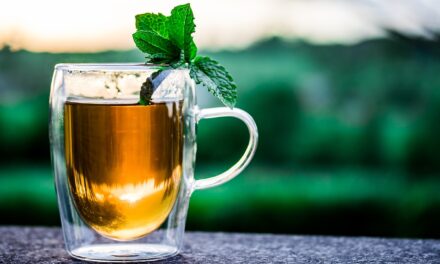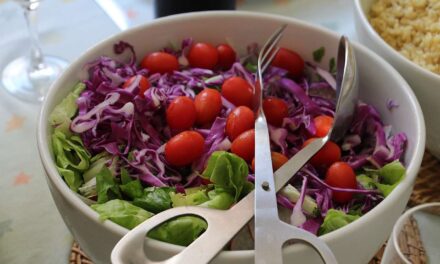In an era where the dialogue around aging is profoundly shifting, the concept of ‘pro-aging’ has emerged as a beacon of positivity and empowerment. Pro-aging is not about anti-aging; it’s about embracing the aging process with grace, vitality, and a proactive stance towards health and wellness. For men and women over 50, this means adopting fitness and diet strategies that support not just longevity, but a high quality of life filled with energy, strength, and happiness.
Understanding pro-aging requires a shift in perspective, recognizing that aging is a natural, inevitable process that can be rich with growth, learning, and fulfillment. The pro-aging movement seeks to counteract ageism and the negative stereotypes associated with getting older, promoting a message that the later years can be some of the most rewarding and vibrant times of our lives. This positive outlook is supported by adopting specific fitness and dietary approaches designed to enhance well-being, manage health challenges, and celebrate the capabilities and potential of our bodies at every age.
Fitness and nutrition play pivotal roles in the pro-aging journey. Research consistently shows that regular physical activity and a balanced, nutrient-rich diet can significantly impact our health, mood, and energy levels, reducing the risk of chronic diseases and improving physical and cognitive function. However, the key to success lies in tailoring these strategies to meet the unique needs and goals of those over 50, focusing on sustainability, pleasure, and respect for the body’s changes over time.
This article delves into the essence of pro-aging fitness and diet strategies, offering insights, expert advice, and practical tips to empower you to age proactively and with purpose. Whether you’re looking to enhance your current health regimen or embark on a new path to wellness, the pro-aging perspective opens up a world of possibilities for thriving in your 50s and beyond.
The Pillars of Pro-Aging Fitness
Adopting a pro-aging fitness strategy involves more than just staying active; it’s about choosing activities that maximize health benefits, enhance enjoyment, and promote overall well-being. The following sections will explore key components of a pro-aging fitness routine, including strength training, cardiovascular health, flexibility and balance, and the critical role of recovery and rest.
Stay tuned for detailed insights into each fitness component, supported by the latest research and expert opinions, to guide you in building a comprehensive and enjoyable workout regimen that supports your pro-aging goals.
Navigating Pro-Aging Fitness: Strength, Flexibility, and Endurance
The foundation of pro-aging fitness lies in a holistic approach that incorporates strength, flexibility, and endurance training. Each element plays a crucial role in optimizing health and enhancing the quality of life as we age.
Strength Training: The Cornerstone of Muscle Health
Strength training is paramount for maintaining muscle mass, which naturally begins to decline after the age of 30. For those over 50, incorporating regular resistance exercises can help counteract age-related muscle loss, improve metabolism, and support bone density. Research suggests that engaging in strength training sessions at least two times per week can significantly impact physical health, aiding in weight management and reducing the risk of chronic diseases such as osteoporosis and type 2 diabetes.
Flexibility and Balance: Keys to Mobility
As the body ages, flexibility and balance can decrease, leading to a higher risk of falls and injuries. Integrating yoga, Pilates, or tai chi into your fitness routine can enhance flexibility, improve balance, and strengthen core muscles. These practices not only support physical health but also offer mental health benefits, including stress reduction and improved cognitive function.
Cardiovascular Endurance: Fueling Heart Health
Cardiovascular exercise, such as walking, swimming, or cycling, is essential for maintaining heart health and improving stamina. These activities help manage blood pressure, lower cholesterol levels, and reduce the risk of heart disease. For optimal benefits, aim for at least 150 minutes of moderate-intensity aerobic activity or 75 minutes of vigorous-intensity activity per week, as recommended by health guidelines.
Recovery and Rest: Essential Components of Fitness
Recovery and rest are as vital as the exercise itself, especially for the over-50 demographic. Adequate rest between workout sessions allows muscles to heal and grow stronger, reducing the risk of injury. Incorporating active recovery days, focusing on gentle movement and stretching, can further enhance flexibility and aid in muscle recovery.
Expert Insights on Pro-Aging Diet Strategies
Nutrition is a critical ally in the pro-aging journey, offering the fuel and building blocks our bodies need to thrive. A focus on whole, nutrient-dense foods can support physical health, cognitive function, and energy levels.
Whole Foods for Holistic Health
Emphasizing whole foods, such as fruits, vegetables, lean proteins, whole grains, and healthy fats, provides a broad spectrum of vitamins, minerals, and antioxidants. These nutrients are essential for supporting cellular health, reducing inflammation, and boosting immunity. Including a variety of colorful fruits and vegetables in your diet can ensure a wide range of nutritional benefits.
Calcium and Vitamin D: Supporting Bone Health
Calcium and vitamin D are critical for maintaining bone health and preventing osteoporosis. Dairy products, leafy greens, fortified foods, and fatty fish are excellent sources of these nutrients. For those over 50, considering supplementation might be beneficial after consulting with a healthcare provider, as absorption efficiency can decline with age.
Hydration: The Understated Hero
Proper hydration is essential for overall health, yet it’s often overlooked. Water supports every cellular function in the body, aids digestion, and helps to flush toxins. As the sense of thirst can diminish with age, it’s important to consciously include fluids throughout the day, prioritizing water and other hydrating beverages.
Summary and Takeaways: Embracing a Pro-Aging Lifestyle
Adopting pro-aging fitness and diet strategies offers a powerful path to thriving in the later years. By focusing on strength, flexibility, and cardiovascular health, integrating recovery and rest into your routine, and prioritizing a nutrient-dense diet, you can support your body’s health and vitality.
- Engage in a balanced exercise routine that includes strength training, flexibility work, and cardiovascular activities.
- Incorporate whole, nutrient-rich foods into your diet, focusing on variety to cover all nutritional bases.
- Don’t underestimate the importance of hydration and recovery in supporting your fitness goals and overall well-being.
- Consult with healthcare and fitness professionals to tailor your approach to your unique health needs and lifestyle preferences.
Embracing pro-aging principles is about celebrating life’s journey with vitality, resilience, and a proactive stance toward health. With the right strategies, the years after 50 can be some of the most rewarding and vibrant.






